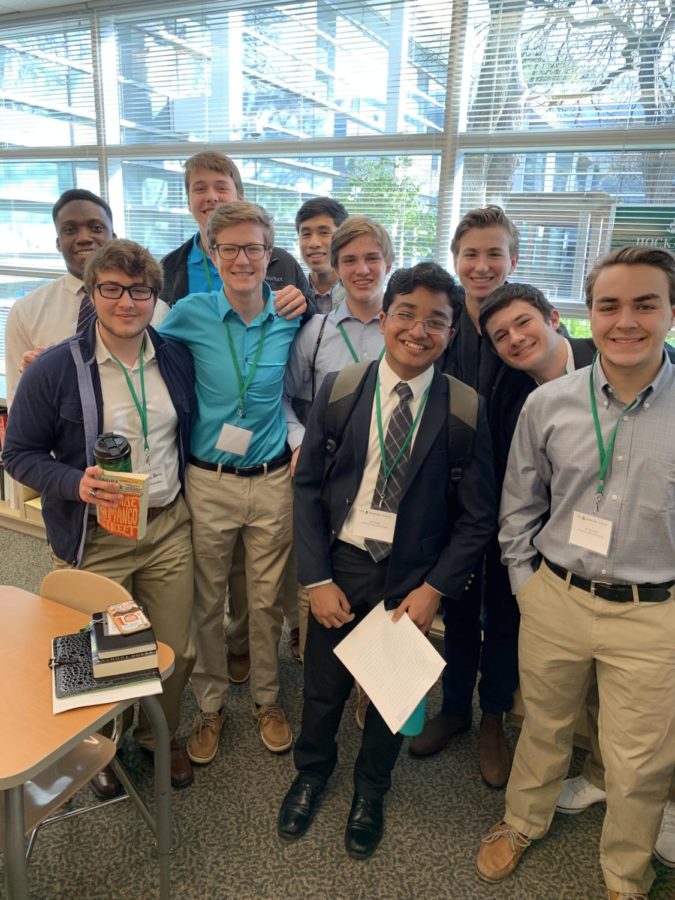The Colloquium on Welch Road
March 21, 2019
In the crisp, glistening light of a North Eastern dawn, Sandra Cisneros boarded a plane bound for Dallas, Texas. One might ask why a person, given the chance to be anywhere in the world other than Dallas, would willingly step foot in this most mediocre of metropolitan areas. The answer to this hypothetical query is simple: there was a literary emergency.
On February 13, students from ten different DFW private schools gathered at the Hockaday School for the seventh annual Interscholastic Colloquium. The topic of discussion was Sandra Cisneros’ The House on Mango Street, a modern classic about a young Hispanic girl growing up in an impoverished neighborhood in Chicago. Eighty-nine papers and creative works responding to ten different prompts were selected to be presented and discussed by students and faculty throughout the day. Of these eighty-nine works, thirteen were created by Cistercian students. It is important to note that, rather than shying away from some of the more controversial topics of discussion, many Cistercian boys threw themselves headlong into the challenge by writing about topics such as the American Dream or the Chicano culture.
Among the highlights of the day was the keynote address by Sandra Cisneros herself. She spoke about her life, her writing, and her inspirations and impetus behind the composition of The House on Mango Street. She gave an important message about the nature of beautiful art: it comes from love—love of the people one is writing about, love of the people one is writing for, and love of the art in itself. The best art is saturated with love. The House on Mango Street was a labor of love for Cisneros, but it also developed from intense anger and a feeling of isolation. Although a work of art should be made with love, anger can be a great force when channeled toward the production of a beautiful thing. She urged us to be angry, passionate, and full of love. It was an incredible honor to be able to interact in person with an author of her talent and stature; her presence gave a certain validation to the day’s endeavors, to the essays and conversations centered around her novel.
After having attended both last year’s and this year’s colloquia, I can say that they offer a rare glimpse into the thoughts, attitudes, and vantage points of persons or communities that the relatively isolated Cistercian student rarely encounters. Many of the topics of focus at the Hockaday colloquium are very rarely broached in the casual conversations or academic discussions that echo down the terracotta tiled hallways of our monastic all-boys institution. For instance, the ideas of cultural or personal identity and gender dynamics were the direct focus of ten out of the twenty-seven sessions one could attend at the Hockaday colloquium. I can probably count on one hand the number of times the term“gender dynamics” has been used in a class during my eight years here. These colloquia help us to understand the language and thinking of many of our peers; they allow us to participate in dialogue we would never enter into if left to ourselves.
It is a great blessing to be able to participate in a day of literary conversation every year, and we have the hard work of our own faculty and the faculty of the participating DFW schools to thank for this opportunity. We ought to cherish the dialogue entered into between schools and the different perspectives we encounter in the strange world beyond our wood-paneled walls.
